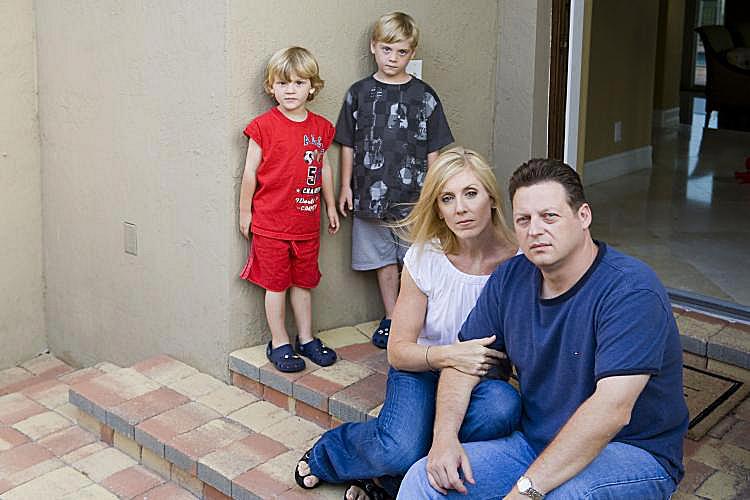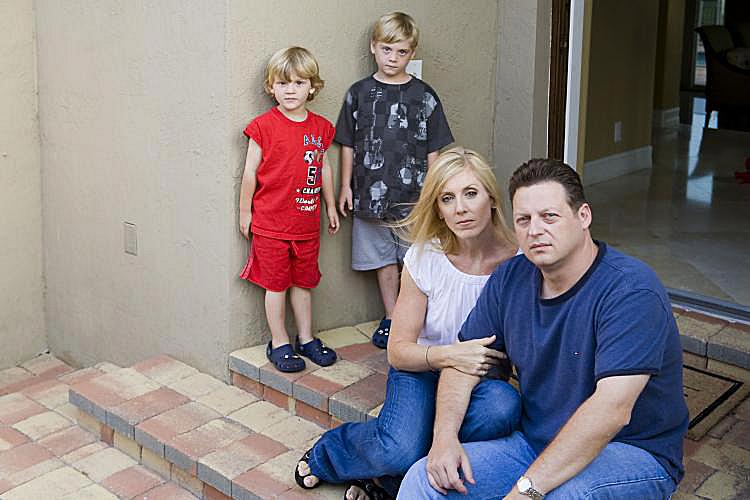NEW YORK—Thousands of homes in America could be contaminated from toxic Chinese drywall, making it the latest “Made in China” scandal.
“This is a disaster of biblical proportions,” said Thomas Martin, president of America’s Watchdog, a citizen-based consumer advocacy group. Used in construction, the tainted drywall emits a sulfur gas that mixes with moisture in the air to produce sulfuric acid—a highly corrosive acid found in acid rain.
Many affected houses have a rotten-egg-like smell, metal is turning black, and appliances are failing. Health risks include respiratory system irritation, dizziness, headaches, fatigue, irritated eyes, coronary heart disease, coma, convulsions, and liver damage.
“We’ve got people in Louisiana who only put four or five sheets [of drywall] in their home and now their whole house has been poisoned,” Martin said. The group set up a Chinese Drywall Complaint Center, and it says it receives about 200 calls a day.
The tainted drywall was first discovered by the Consumer Product Safety Commission’s (CPSC) in December 2008. A domestic shortage of drywall following hurricanes Katrina and Wilma and nationwide building booms meant companies imported more from China. The Chinese-made product was also cheap. Florida has been hit the hardest with around half of the boards shipped there.
The company identified as manufacturing some of the tainted Chinese drywall is Knauf Plasterboard Tianjin, and it labels its product “Knauf-Tianjin.” The parent company, Knauf Gips, is headquartered in Germany. There are four manufacturing plants in China. Calls to all four Chinese plants elicited no information. A call to a Knauf U.S.A. branch was not returned.
Senators Mary L. Landrieu, (D-La.), and Bill Nelson, (D-Fla.), filed legislation last week seeking a recall of the drywall and an immediate ban on defective building products from China.
“This defective Chinese drywall represents an attack on our homeowners, a defrauding of our homebuilders, and another obstacle on our road to recovery,” Sen. Landrieu said in a statement.
Florida Governor Charlie Crist has been urged to pronounce a state of emergency over the problem.
Dream Home Turned Nightmare
John Willis, his wife Lori, and two young boys, moved into their home in Parkland, Fla., December 2006. Four to five months later, they became aware of serious health symptoms.
Willis said the Chinese drywall in their home caused the family to suffer through “nightmarish health problems,” including an aggressive sinus infection suffered by the older boy, which required IV antibiotic treatment and surgery.
“Our younger son has had some respiratory issues—runny eyes and nose, itchy, burning eyes—symptoms we’ve all had at different times in the house,” he said.
The Willis family is not alone. According to America’s Watchdog, there are potentially 300,000 to 400,000 homes across the country affected. Yet shipments of the potentially harmful drywall continue to enter the U.S.
Shipments totaling more than 550 million pounds of the product have entered the country since 2006, according to data from PIERS (Port Import Export Reporting Service). According to PIERS, the primary source of U.S. waterborne import-export trade data, the last known shipment landed in Long Beach, California, on March 12 this year.
“This is more than a nationwide problem, this is a serious problem,” said Michael Foreman of Foreman and Associates, a construction consultancy firm in Sarasota, Florida.
In the last few months alone, Foreman has recently undertaken more than 150 analyses of homes. “Approximately 50 percent of those [houses] that we look at are affected,” he said
“It’s very easy when you walk into a house and the odor is there—it’s a no-brainer.”
The odor is not always present in houses with defective drywall. Foreman’s company carries out 18-30 analyses per week and they are booked out three weeks in advance.
Federal Response
The Environmental Protection Agency (EPA) says they are aware of the health complaints triggered by Chinese drywall.
“We are concerned about the possible risk to human health and we believe more data and analysis are needed to move forward,” said Dave Ryan, a press officer with the EPA in Washington, D.C. Ryan said the EPA is helping the CPSC investigation and offering technical advice to federal and state agencies.
CPSC spokesperson Scott Wolfson said they found out about the tainted drywall in late December 2008 or early January 2009. An investigation team was sent to Florida late March this year to take samples.
“We responded as quickly as we could,” Wolfson said. “This is a priority situation for CPSC.”
The investigation team included a toxicologist, an electrical engineering specialist, a compliance division manager, and a fire engineer. The fire expert was present to check any effects the drywall has on smoke alarms and fire safety components.
The CSPC were unable to specify when results would be available.
“We need to be able to get to the heart of the matter,” Wolfson said. “This is a very complicated issue, nothing similar has happened.”
Sen. Nelson, a member of the Senate Commerce Committee, which oversees the CPSC, said, “The agency is doing too little, too late to help residents of Florida and other states who are reporting serious health and safety problems associated with living in homes built with tainted drywall.”
Class Action Suit
While the federal response is still in the making, those who have been affected are banding together for legal retribution.
Lead lawyer for the homeowners, Jordan Chaikin of personal injury firm Parker Waichman Alonso LLP, filed a class action lawsuit late February.
“This matter is extremely urgent,” said Chaikin. “We’ve got people who are living in their homes who are affected by this, who have nowhere to go. They can’t afford to rent somewhere else, and who are afraid of ruining their credit and ruining everything, and losing what they’ve worked so hard for.”
He believes every state will be affected.
“It will be the biggest catastrophe in the U.S. housing market history,” asserts Chaikin. “Without a doubt.”
Chaikin’s firm, and the firms they are co-counseling with have filed 15 to 20 class action suits. “Who we are going after is all of the Chinese manufacturers, all of the distributors and all of the suppliers of the Chinese drywall,” he said.
“This isn’t the first defective product that we’re dealing with,” said Chaikin. “China, unfortunately is very poorly regulated, and we, Americans have suffered in the last several years, from defective Chinese products—whether it’s been defective pet food, or baby formula, or toys, or paint, or in this case drywall.”
Foreman agrees. “There’s no doubt in my mind that there’s going to be more defective products, because of the process of manufacturing and the materials and the lack of accountability or certificates that have some meaning.”
He said he also has concerns about the lack of border inspections for products. “The port authority guys are instructed to accept the [import] documentation without question, unless they can validate there’s a question in the documentation.
“So you got a certificate—was that checked at the factory, was there a third party, was there someone inspecting it? I don’t think so in a lot of cases because one of the companies we’ve been tracking, the Tianjin Company, that’s actually owned by the [Chinese] government. So I don’t need to explain that to you.”
How do I know if my home contains tainted Chinese drywall?
Common health complaints include:
- Nose bleeds
- Headaches
- Coughs
- Upper respiratory or sinus issues
- Eye irritation
- Tiredness
- Difficulty breathing
- Aching body
- Rashes
- Family pets may have died
Common building-related issues include:
- Continuous falure of air conditioning coils, or HVAC units beyond anything normal. Copper coils have turned black, or a grayish black
- Oven, or stove elements, or refrigerator coils may have failed a number of times
- Failure of electrical appliances—computer, TV sets, radios, DVD players, smoke detectors microwave information display panels may have failed
- Corroded, or black electrical wiring
- High end silver jewelry, or silver plated utensils may be tarnished
- Light bulbs in homes with toxic Chinese drywall may burn out at a much faster rate than specified by the manufacturer
- Smell of rotten eggs
Who to contact:
- Your doctor
- State health department
- Homeowners Consumer Center/America’s Watchdog
- Government representatives
SOURCE: Homeowners Consumer Center at 866-714-6466.







Friends Read Free